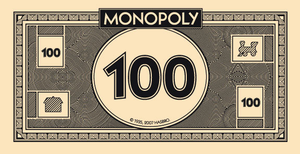Recognizing Counterfeits

Counterfeits always look real.
They are designed to trap the unwary.
Looks can be deceiving. Both the authentic object and the fake look alike at first glance. Telling the difference between what is real and what is not may require training, apprenticeship, and specialized equipment. If we don't know what to look for or don't have the tools to find the signs of authenticity, we will be hornswoggled.
Big features unite, small details divide
Counterfeits always get the big features right. No one mistakes Monopoly money for the U.S. dollar.
To discriminate between an authentic item and its counterfeits requires skill and attention to fine detail. Tiny differences can make all the difference in the world.
To discriminate between a virus that is negligible and one that will eat you alive requires highly specialized equipment and professional technicians.
There are different kinds of differences. Some differences make no difference (used bill vs. one that is newly printed). Some small differences can make all the difference in the world.
This is why arguments about religion tend to descend into minutiae (plural form of minutia).
Expert witnesses sometimes needed
Diagnostic machinery: magnifying glasses, microscopes, black lights, PCR machines, fingerprint analysis, spectroscopes, etc.
When recognizing the telling details requires the expert use of technology, no laymen need apply!
Jn 1:1 Jehovah's Witnesses translate this as "a god" because there is no definite article there. They say that if it doesn't say that the word is "the" god, then it doesn't mean that He is God. The fellow on Catholic answers claims that "the" is not used in the predicate. I'm not sure that's persuasive. It's something about which reasonable people can reasonably disagree.
Dissenting Catholics are dishonest Protestants
Counterfeit Catholicism: keep the cult (statues, rituals, smells and bells), abolish creed & code.
Real currency is backed by authority
Even if there were a perfect counterfeit of a piece of currency, correct down to the last detail, the most important difference remains: the authentic money is issued by authority of the government while the whole point of the counterfeit is to evade the authority of the government.
A form of Catholicism that replicates all of the details of the Catholic life that is not authorized by the Church is a counterfeit.
Counterfeits Imitate Realities
Christianity is a miracle-based religion. If Jesus didn't rise from the dead, then we're dead in sin and are "the most pitiful people of all" (1 Cor 15:19). If Jesus did rise from the dead, not just by resuscitation but by a transfiguration of His body, then "all things are possible with God" (Mt 19:26). We believe that the Holy Spirit "has spoken through the prophets" (Nicene Creed) and that there is a New Testament gift of prophecy, too (1 Cor 12:7-11). So we can't in principle exclude the possibility of authentic prophecies being given to visionaries.
I can understand why some Christians get led astray by the Malachy prophecies and folks like Joseph Smith, William Miller, Jim Jones, David Koresh (Vernon Wayne Howell), Charles Manson, Marshall Applewhite, and hundreds or thousands of other false prophets.
"Bad money drives out the good." Counterfeit prophecies give the real thing a bad name — but no one counterfeits what is worthless. (Those familiar with it may advert to the "There must be a horse" joke at this point.) If there were no gold, there would be no fool's gold.